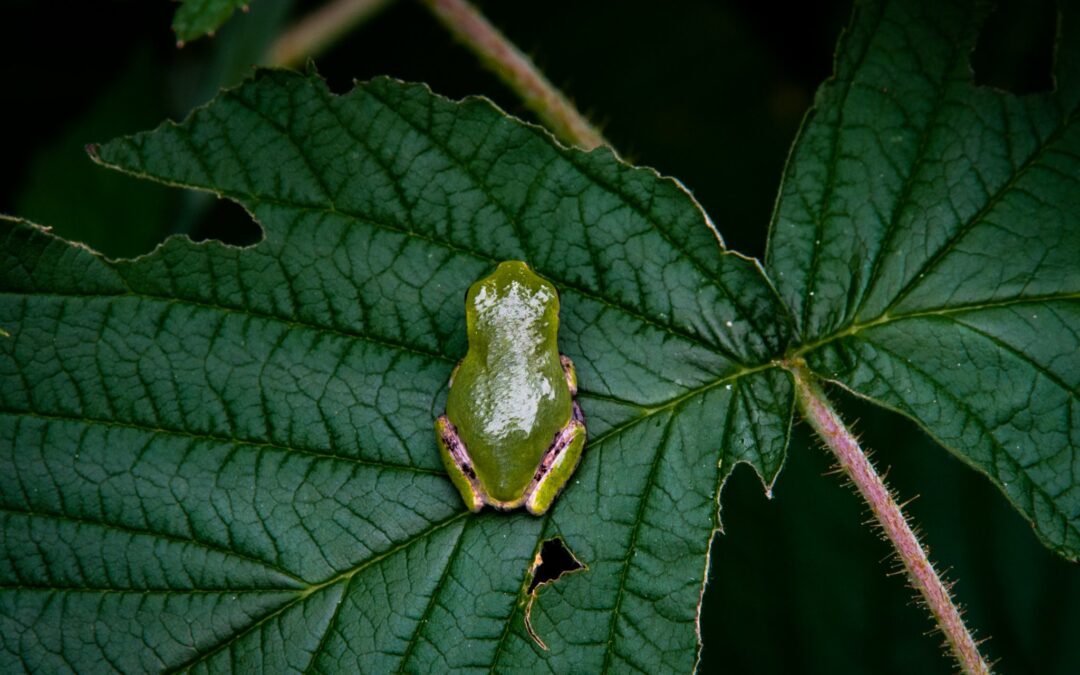Several years ago, while teaching U.S. History in one of the cabins near the Heron’s Hideout playground, I happened to look out the window just as a bobcat and her kitten were bounding through the snow on the golf course. The animals could not see us in the cabin, so it was the perfect opportunity to watch wildlife in action without disruption – well, at least the bobcat lesson, my history class would not survive that day. Of the many advantages of Shaker’s location in East Concord, being able to watch animals in their natural habitat is among the best.

Bobcat photographed on campus by Dan Stickney, 2022
Despite the area around the school becoming more suburban than in the 1970s, many species of animals continue to make their homes in the ponds and forests on and adjacent to campus, providing learning opportunities that books and videos can never achieve. The list of animals is long and diverse, including rabbits, beavers, ermines, muskrats, moose, turtles, fish, turkeys, deer, bears, snakes, racoons, hawks, eagles, groundhogs, foxes, and of course many squirrels and chipmunks. When I once mentioned this at a school safety conference focusing on emergency preparedness, the instructor thought the school must be “up North” and was shocked that it is in Concord. Yes, healthy animal habitats exist here in the Capital City.

Snapping turtle photographed on campus by Dan Stickney, 2024
During the Covid lockdown period in the spring of 2020, I worked online from my office. As one of the few people on campus, it was eerily quiet. Without the noise of hundreds of children playing, the animals felt comfortable venturing closer to the buildings. A bobcat routinely enjoyed the warm spring sun by lounging on the main quad, but when everyone returned, the animals quickly retreated to the protection of the forest. Periodically, people ask about the safety of so many animals in such close proximity to the school. Thankfully, none of these creatures pose a threat to anyone at school, as we keep our distance and have protocols to ensure the safety of both humans and our wildlife neighbors.

Black bear photographed on campus by student Marissa R., 2024
It is important to respect but not fear these animals. We teach the students that observation is an important way to learn, and by watching but not interfering, we can better understand animal behavior. A few years ago, three fox litters were born on or close to campus. One temporarily located its den beneath the “golf shack,” which was temporarily closed until the foxes moved out. In the meantime, students would quietly sit on the knoll and watch the kits emerge and wrestle and play on the grass by the golf course. More than any video game or phone app, the real life show in nature enraptured the students, no incentives or algorithms needed.
Sometimes, nature teaches a tougher lesson. Yes, animals have died on the school property. A few years ago, the middle school students watched a bird of prey attack a nest of hatchlings. The gruesome scene taught a different lesson, thankfully to the older students, about the realities of the natural world. All these opportunities to see animals in their natural environment are a gift to the school community, providing lessons and experiences that will remain with students forever and hopefully encourage them to protect the natural world for future generations.
More Wildlife Sightings

Fox photographed on campus by Kristyn LaRochelle, Fall 2021

Moose photographed on campus by Kristyn LaRochelle, Fall 2021

In 2021, during an outdoor Spanish class, kindergarten students spotted baby snapping turtles emerging from their nest near the 400 building. With the help of Mr. Stickney, they gathered over 20 of the hatchlings and relocated them to a campus pond.

Wild turkeys photographed on campus by Barbara Morrison, Fall 2021

Tree frog photographed on campus by Dan Stickney, 2024

Wood frog photographed on campus by Debbie Potter, 2024

Spotted salamander photographed on campus by Dan Stickney, June 2024



